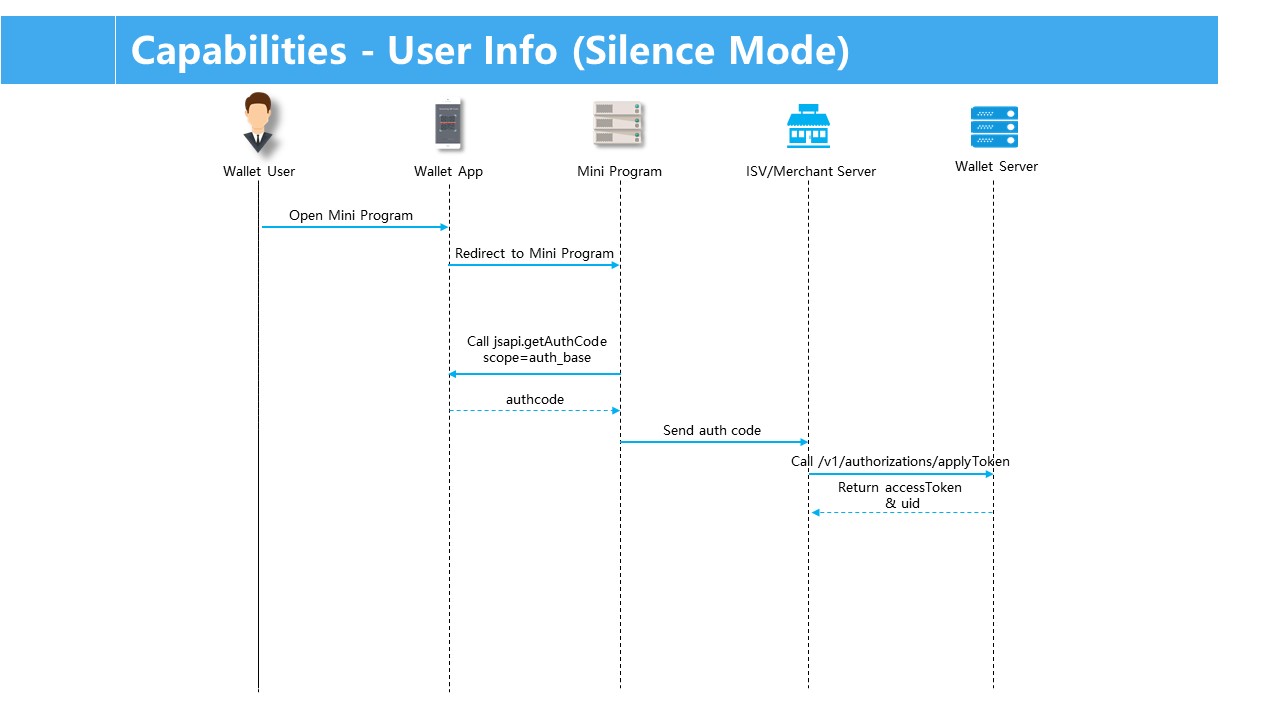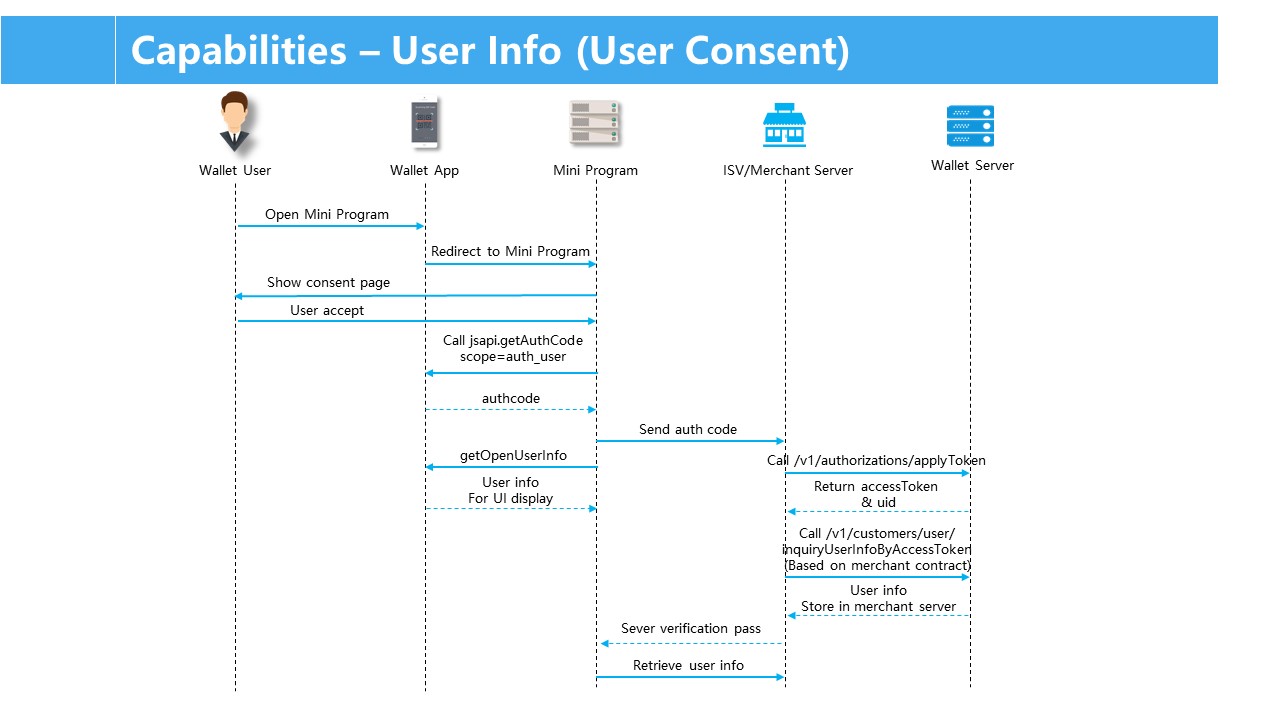User information capability
All the user information on the Mini Program Platform requires user's authorization. Based on the industry standard OAuth2.0 authorization mechanism, mini program developers can get user authorization to obtain user information.
Note: Developers must fully respect the privacy of users and properly use the user authorization. If the information is found to be used beyond the agreed scope or reasonable usage, the platform has the right to permanently withdraw the interface authority of mini program.
Prerequisites
- This capability is open to merchants who have become business partners of the wallet.
- Make sure that the integration and configuration have been completed and the mini program has been released.
Interaction process
Silence mode
The silence mode requires the user's consent on a native app to collect the required information. The interaction flow of the silence mode is illustrated as below:

- The user opens the wallet app and is redirected to the merchant mini program.
- The merchant mini program calls the
getAuthCodeJSAPI to requestauthCodefrom the wallet app. - The wallet app returns
authCodeto the merchant mini program, which sendsauthCodeto the ISV or merchant server. - With the obtained
authCodein step 3, the ISV or merchant server calls the/{version}/oauths/applyTokenOpenAPI to requestaccessTokenanduidfrom the wallet server.
Note: The version is the version of Open APIs, for example, v1 or v2.
- The wallet server returns
accessTokenanduidto the ISV or merchant server.
Notes:
authCodeis used to exchange foraccessToken. Every time the user authorization is completed,authCodein the JSAPI response is different.authCodecan only be used once and will automatically expire within one day.- After the ISV or merchant obtains
accessTokenanduid:
- The ISV or merchant can use
accessTokento call other OpenAPIs. For example, call theinquiryUserInfoByAccessTokenOpenAPI to query the user information. - The ISV or merchant can generate a session that maps to
accessTokenanduid, then set session expiration time and store the mapping. The session will be stored in the mini program framework.
User consent mode
The user consent mode is used to get public user information without further permission from wallets. The interaction flow of the user consent mode is illustrated as below:

Get auth code
When the merchant mini program intends to get authCode for further usage, call the getAuthCode JSAPI by specifying the scope field.
API list
JSAPI | Description |
Gets user's authentication code. | |
OpenAPI | Description |
Note: The | For details, see the Open APIs for Merchants chapter. |
